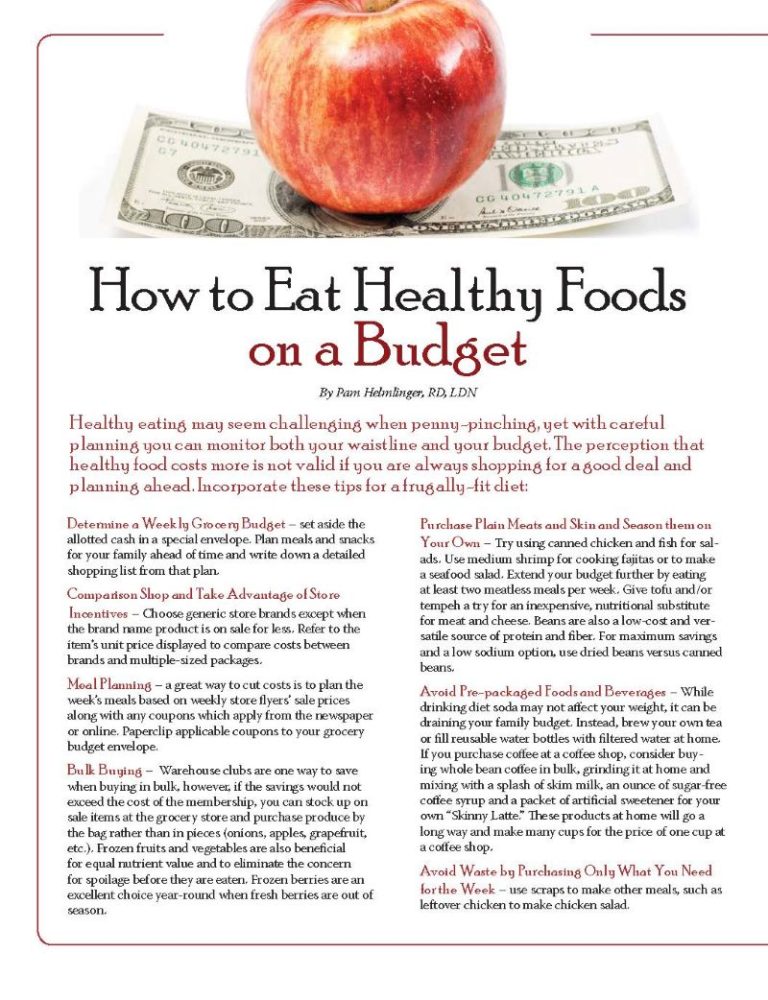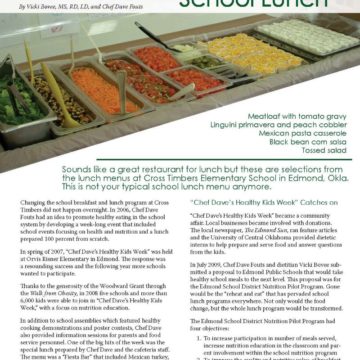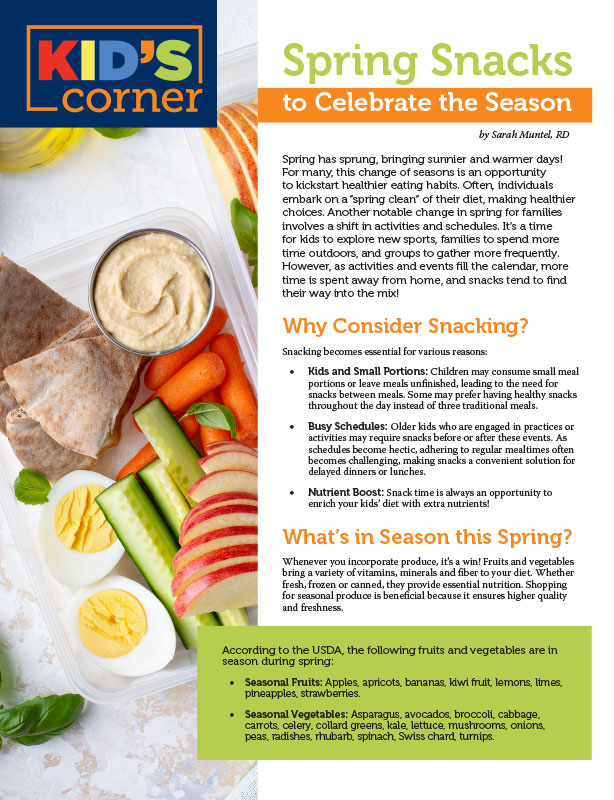How to Eat Healthy Foods on a Budget


by Pam Helmlinger, RD, LDN
Winter 2010
Healthy eating may seem challenging when penny-pinching, yet with careful planning you can monitor both your waistline and your budget. The perception that healthy food costs more is not valid if you are always shopping for a good deal and planning ahead. Incorporate these tips for a frugally-fit diet:
Determine a Weekly Grocery Budget – set aside the allotted cash in a special envelope. Plan meals and snacks for your family ahead of time and write down a detailed shopping list from that plan.
Comparison Shop and Take Advantage of Store Incentives – Choose generic store brands except when the brand name product is on sale for less. Refer to the item’s unit price displayed to compare costs between brands and multiple-sized packages.
Meal Planning – a great way to cut costs is to plan the week’s meals based on weekly store flyers’ sale prices along with any coupons which apply from the newspaper or online. Paperclip applicable coupons to your grocery budget envelope.
Bulk Buying – Warehouse clubs are one way to save when buying in bulk, however, if the savings would not exceed the cost of the membership, you can stock up on sale items at the grocery store and purchase produce by the bag rather than in pieces (onions, apples, grapefruit, etc.). Frozen fruits and vegetables are also beneficial for equal nutrient value and to eliminate the concern for spoilage before they are eaten. Frozen berries are an excellent choice year-round when fresh berries are out of season.
Purchase Plain Meats and Skin and Season them on Your Own – Try using canned chicken and fish for salads. Use medium shrimp for cooking fajitas or to make a seafood salad. Extend your budget further by eating at least two meatless meals per week. Give tofu and/or tempeh a try for an inexpensive, nutritional substitute for meat and cheese. Beans are also a low-cost and versatile source of protein and fiber. For maximum savings and a low sodium option, use dried beans versus canned beans.
Avoid Pre-packaged Foods and Beverages – While drinking diet soda may not affect your weight, it can be draining your family budget. Instead, brew your own tea or fill reusable water bottles with filtered water at home. If you purchase coffee at a coffee shop, consider buying whole bean coffee in bulk, grinding it at home and mixing with a splash of skim milk, an ounce of sugar-free coffee syrup and a packet of artificial sweetener for your own “Skinny Latte.” These products at home will go a long way and make many cups for the price of one cup at a coffee shop.
Avoid Waste by Purchasing Only What You Need for the Week – use scraps to make other meals, such as leftover chicken to make chicken salad.
Cook at Home and Reserve Eating out for Special Occasions – A single night at a restaurant may cost you as much as the week’s groceries. Studies show that home-cooked meals are more nutritious and that families who eat together have better communication.
Cook extra portions for freezing and utilize leftovers throughout the week. The extra effort will result in time savings later and is perfect for those with a hectic schedule. Get creative and try limiting recipes to just a few basic ingredients.
Make Your Own Convenience Foods – Although buying washed and bagged lettuce, cabbage and carrots is convenient, it costs much more for less quantity. Try making your own convenience foods by dicing and chopping vegetables on the weekends to quickly add to a recipe or salad on a weeknight.
Plant a Garden – Another way to save on vegetables is to plant a garden. It takes some time but can be a fun hobby. If you have never planted before, try starting with tomatoes and some fresh herbs.
According to the February 2009 issue of Consumer Reports magazine, here are some nutritious foods and cost per serving:
- Cooked Black Beans – 114 calories per serving, 7 cents per serving, high in fiber/B vitamins/protein
- Egg – 78 calories per egg, 9 cents per egg, high in protein/iron/B-12/choline
- Cooked Broccoli – 27 calories per half cup, 33 cents per serving, high in vitamins C & A/fiber/phytochemicals
- Chicken Breast – 142 calories per 4 oz portion, 50 cents per serving, high in protein/iron
With some creativity and planning, you can keep your kitchen well stocked with lean protein, high fiber, fresh and frozen goods and seasonal produce. Eating well is manageable for everyone and sets one up for a healthy meal plan without the temptations that come with excess food on hand.
Let’s Compare!
The following is an example of both cost comparison and nutrition facts comparison for a couple of different meals…
Meal A
1 piece meat lasagna (1/12 recipe)
2 slices garlic bread
2 cups romaine lettuce
2 tsp. shredded parmesan
2 oz. Caesar salad dressing
Per Serving: 938 calories, 47g fat, 97g carbohydrates, 31g protein
Cost/serving: $3.98
Meal B
1 Morningstar Farms Sun dried Tomato & Basil Pizza Burger pattie
1 oz. marinara sauce
1 slice mozzarella cheese melted on top
2 c. romaine lettuce
2 tsp. shredded Parmesan cheese
10 sprays Caesar Delight Vinaigrette Spritzer
Per Serving: 279 calories, 14g fat, 12g carbohydrates, 22g protein
Cost/serving: $2.85
You can consider your calorie intake a budget just like your checkbook for your financial budget. In this case, you would have saved $1.13 per person for meal B and your calorie savings would be 659!
As you can see, it is possible to eat healthy on a budget. It takes an awareness while you grocery shop and while you eat/dine out to make this possible.
The key is that you need to get creative and look at labels and prices. So, next time you are at the grocery, take these important tips with you to help you determine what is the healthiest and most economical option for you and your family!
About the Author:
Pam Helmlinger, RD, LDN, has worked with the Center for the Treatment of Obesity at Centennial Medical Center since 2006. She is specialized in bariatric surgery and holds a certificate of training in adult weight management. Currently, she provides pre and post-op nutritional counseling in addition to education for patients in a medical weight-loss program.
by Sarah Muntel, RD Spring 2024 Spring has sprung, bringing sunnier and warmer days! For many, this…
Read Articleby Nina Crowley, PhD, RD (with Inspiration from Shawn Cochran) Winter 2024 Dating, no matter your age,…
Read ArticleWith the holidays behind us and 2022 now here, many of us are ready to tackle our…
View Video










